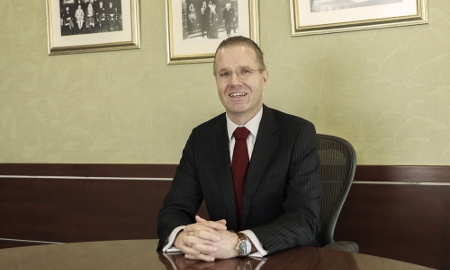An emblematic institution in the history of the Kingdom of Saudi Arabia as the first banking franchise in the country,
Saudi Hollandi Bank (
SHB) has reached an impressive list of milestones in its nine decade existence, which include the issuance of the first coin in the country, facilitating the first transfers between the Kingdom and American energy companies, acting as the Central Bank during the Second World War and becoming the first Saudised joint venture in the banking sector in 1977.
The country’s eighth largest bank at the moment and accounting for 3.9% of total banking assets in Saudi Arabia, Saudi Hollandi Bank continues to lead the way in the fast growing and competitive Saudi banking sector. In 9M2012, its net income grew by 17% year-on-year, while profitability ratios increased by 2.1% and 16.5% for ROAA and ROAE respectively. The bank’s operating revenues were supported by a 16% increase in loans during that period and a close monitoring of operating costs. Its non-performing loan ratio was lower than the country average at 1.7%, while its reserve coverage was high at 143%. Consequently, in February 2013 Fitch affirmed the Bank’s Long Term Issuer Default at A- with a stable outlook, reflecting SHB’s sound liquidity and profitability and high quality assets, but also the potential to further diversify its loan portfolio.
According to Managing Director Dr. Bernd van Linder, SHB’s financial soundness reflects the state of affairs in the Saudi banking sector as a whole. “Banks in Saudi Arabia have experienced non-interrupted growth since 2005- 2006. All the banks in the Kingdom are essentially old-fashioned commercial banks that provide financing to the real economy.” Furthermore, the regulator, the Saudi Arabian Monetary Agency (SAMA) was the driving force behind the strong fundamentals of the banking sector, seeing how it imposed strict liquidity limits such as an 85% loan to deposit ratio long before the recent financial crisis. But sustainability in banking in Saudi Arabia has gone beyond returns on equity and capital adequacy, as SAMA has tackled asset quality and intagibles like human resource development early on. One of the biggest promoters of developing the local work force, SAMA has encouraged the formation of a group of Saudi banking professionals, which accounts for over 80% of the staff of most banks in the Kingdom, a rare feat in a country where foreigners make up over 70% of the workforce.
Attracting and retaining staff of the highest caliber is a priority for banks in Saudi Arabia. Saudi Hollandi Bank in particular engages in initiatives such as setting up its own training academy in 2009, in which the best trainers in the world are flown to train existing staff and new recruits, and a Management Trainee and Management Talent Development Framework, whereby university graduates are recruited, trained in a six month intensive program followed by on the job training in various divisions of the bank, all the while having a very clear career development path set for them.
One of the main focuses of both regulators and banks in recent years has been supporting small and medium enterprises (SMEs), which make up 90% of the companies registered in the Kingdom, but account for less than 4% of bank lending. Eight years ago, the Saudi Arabian Industrial Development Fund supported by all the banks in the Kingdom launched the Kafala program to encourage qualifying SMEs to access credit by having the government act as a partial guarantor for their loans. And in the past three years, SHB has been the bank with the highest growth in its portfolio of Kafala guarantees, having grown from a base of zero in 2009 to being one of the important supporters of the program last year. This reflects SHB’s holistic approach towards SME banking.
Starting in 2011, the bank employed the advisory of the International Finance Corporation (IFC), which has developed its expertise in SME banking in emerging countries for over a decade, to set up its own SME banking services within its retail banking unit. Last November, SHB inaugurated its first SME Banking Centre in Riyadh and has opened eight more since then.
According to Dr. van Linder, SME banking requires specific processes and services but is a very promising business in Saudi Arabia “We consider it a business that is different from retail banking, that is different from corporate banking and that will require its own solutions and services. If those solutions and services will be provided, it can become a business that is very good for the Kingdom, very good for the people in the Kingdom and ultimately very rewarding for the bank as well. ”
Incorporating technology in personal banking is key to being competitive in Saudi Arabia due to the fact that the population is young-over 70% of Saudis are under 25 years old, and therefore are avid users of consumer electronics. Having completed a three year strategy called Al Heen aimed at improving its personal banking unit, SHB recently launched a new online platform and is about to launch a new ATM proposition to make its ATMs the most versatile in the Kingdom. As it is, ATMs in Saudi Arabia perform a vast array of operations, including payment of bills and subscribing to IPOs.
Looking ahead, Dr. van Linder anticipates a double-digit growth for the banking sector as a whole this year, with asset growth being over 15% and likely close to 18%. “The drivers for growth will be all the sectors of the economy, and in particular the large project finance, the SMEs and very solid growth on the retail side in personal loans.”

0 COMMENTS